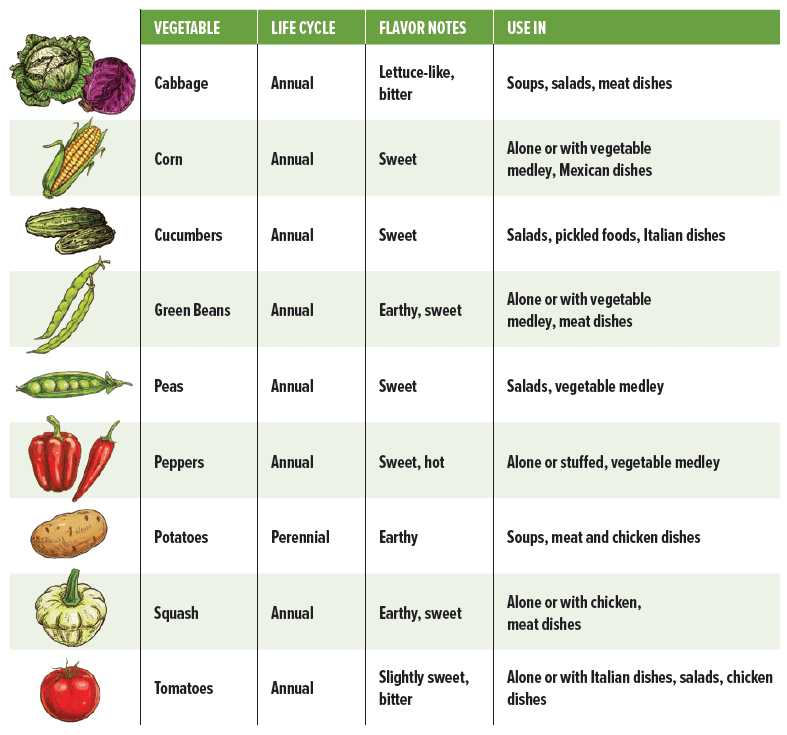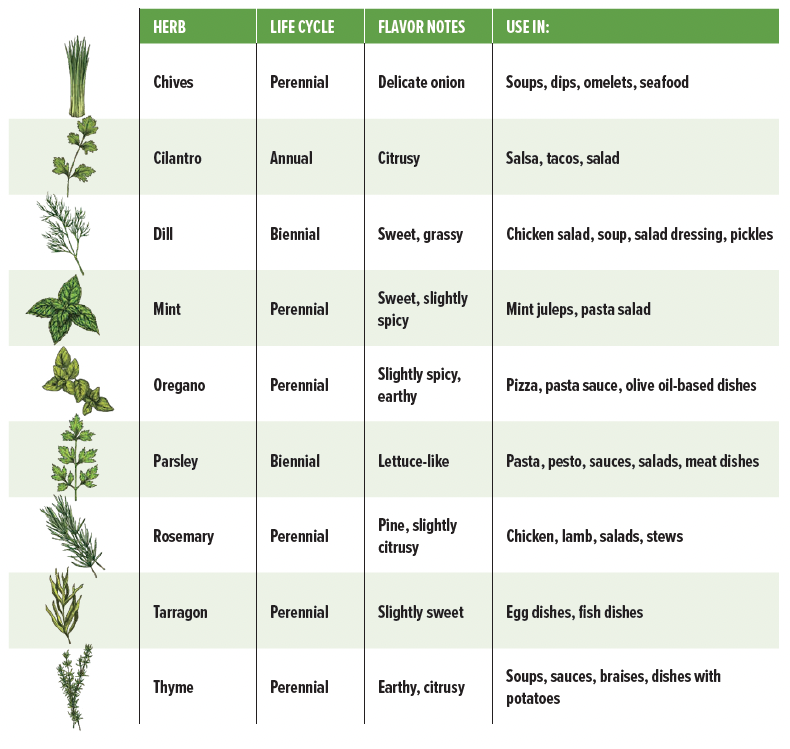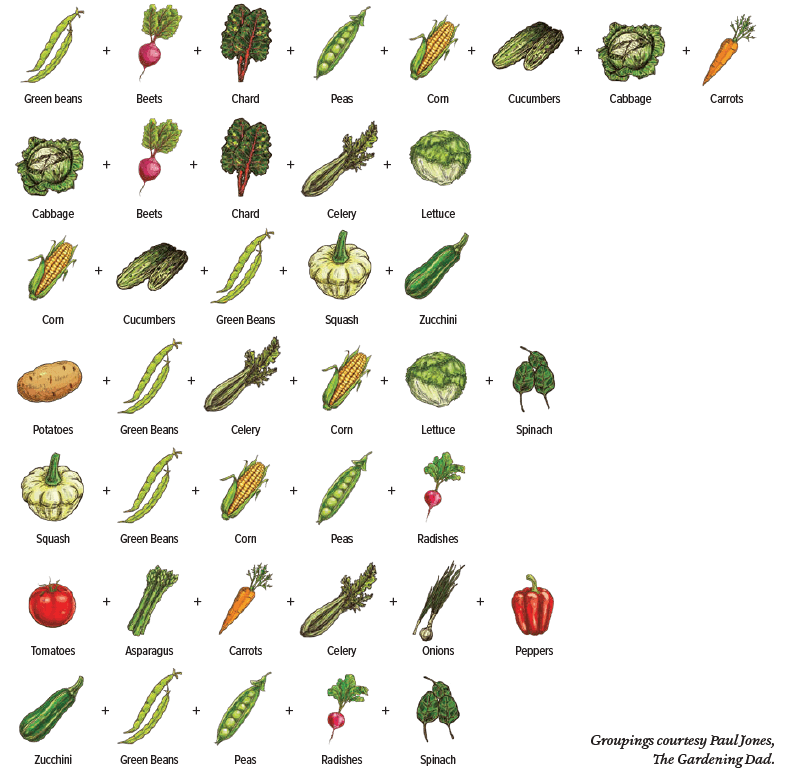Get growing!
Your quick-start guide to growing fruits, vegetables and herbs
Do you want to grow tasty and healthy produce, but don’t quite know where to start? Or do you want to take the next step in plant knowledge without feeling like you’re headed back to the classroom? We get it. Here, in bite-size form, is what you need to know and where to go for more information. And we promise there won’t be a pop quiz at the end.
Get in the zone
According to the U.S. Department of Agriculture plant hardiness zone map, Kentucky falls in zones 6a, 6b and 7a. Find your exact hardiness zone at https://planthardiness.ars.usda.gov. Enter your ZIP code in the search box and click on “search result.” The zone is the standard gardeners use to determine which plants are most likely to thrive at a given location.
Fruitful endeavors
In the hierarchy of difficulty in planting fruits, vegetables and herbs, fruits are at the top of the list.
“Fruits are a lot more complex than vegetables,” says Daniel Becker, extension associate for fruits and vegetables for western Kentucky at the University of Kentucky Research and Education Center at Princeton. “They’re perennial plants and they live a long time—15 to 20 years—and that means they require regular care. They also have a lot more insects and diseases that affect them.
“Fruits can be a bit of a challenge for home gardeners.”
Becker’s No. 1 piece of advice for home gardeners considering planting fruit trees: Go to your county agriculture or horticulture extension agent and tell them what you’re interested in. The agent will be able to direct you to publications and resources.
Fruits that do well in Kentucky

Home gardener’s guide to growing fruit trees
Kentucky’s climate is hard on fruits, but Becker offers these tips from a slideshow he created, called Home Fruit Tree Care.
Plan ahead and be choosy: Choose cultivars for disease and insect resistance and use plants that bloom later in the season. For more variety, choose dwarf and semi-dwarf plants.
Site work: Pick a site with full morning sun, near a water source and that has good drainage. Work when the soil is not too wet. Plant in a hole slightly larger than the root ball with a maximum depth of 12 inches—and resist the temptation to overplant.
Protection: Take steps to deter wildlife damage using repellents like rotten eggs, noisemakers and wire fencing. Control weeds through mulching, fabric and herbicide options.
Maintenance: Trim broken shoots and add support stakes as needed. Don’t overfertilize. Give plants 1 inch of water each week until established (if not supplied by rainfall).
Pruning: Thin fruits for the first two years to establish young trees. Prune in late dormancy, between February and bloom.
Harvesting: When to harvest is based on how the fruit is to be used. For example, says Becker, “If you’re using apples for baking or processing, you harvest them a bit earlier, when they’re firmer or tarter. If you want to harvest apples to eat out of hand, you harvest a little later when they’re a bit less firm, are sweeter and have developed some flavor.”
Helpful publications: At www. ca.uky.edu, search for Midwest Home Fruit Production Guide. At utextension.tennessee.edu, search for Common Herbicides for Fruit and Vegetable Weed Control.
Planting fruit for a family of four
Choose and plant:
- 2 apples (semi-dwarf apple trees are ideal)
- 2 pears
- 2 peaches
- 1 tart cherry
- 1 plum
Growing vegetables and herbs in Kentucky
Potatoes, tomatoes, green beans, sweet corn, onions, cabbage, broccoli, cucumber, peppers—these are among the vegetables Owsley County Extension agent Paul Sizemore, whose office and county are served by Jackson Energy, sees most often in the Kentucky home vegetable garden.
Sizemore, himself a raised bed gardener, notes that home gardeners can grow a lot of produce for a small family in a raised bed or small garden plot in the backyard. The first step? Decide which vegetables the family will eat and focus gardening efforts on those.
7 steps to vegetable gardening
- Plan your garden on paper.
- Choose a sunny site that is well drained, level and near a water source.
- Prepare soil.
- Plan a garden size that can be easily maintained.
- Grow veggies that produce the maximum amount of food in the available space, choosing plants recommended for Kentucky and only those vegetables you will eat.
- Plant during the correct season.
- Harvest vegetables at their proper stage of maturity.
*Source: Home Vegetable Gardening in Kentucky, University of Kentucky College of Agriculture, Food and Environment Cooperative Extension Service. (Available from the Extension Service or download at www.ca.uky.edu, and search for the title.)
9 vegetables Kentucky home gardeners love to plant

Beginner gardeners start here
Gardening expert Paul Jones, known as The Gardening Dad on his blog of the same name, www.thegardeningdad.com, is based in Ohio, but has spent significant time with family in Hebron and Butler, Kentucky, helping plant and tend gardens planted with corn, tomatoes, peppers, squash and other vegetables. Jones is also a rock climber who has not only climbed at the Red River Gorge but has learned about different methods of gardening and types of plants that local residents have grown in the area.
Jones has created the following tips to help beginner gardeners start their first garden or add different vegetables and herbs to an existing garden plot.
“While you can start vegetable and herb seeds indoors from January to March and transplant them out in late spring/early summer, I recommend beginner gardeners buy vegetables and herbs from their local nursery and plant them,” says Jones.
When planting vegetables and herbs outside:
Directly plant them in a garden plot, raised garden beds and even gardening pots for most vegetables and herbs noted on the charts.
Directly plant them in well-draining soil that receives at least eight hours of sunlight daily.
Immediately fertilize vegetables and herbs after planting, water them daily and remove any dead or diseased parts of the plants. Harvest frequently to help promote new plant growth.
9 culinary herbs that love growing in Kentucky

Throughout the gardening season:
Watch for harmful bugs such as aphids, Japanese beetles, cutworms, spider mites and slugs. “You can quickly identify if you have harmful insects by physically inspecting plants for them,” notes Jones. “Look for small holes in the leaves of your plants and inspect for brown leaves and eaten vegetables.”
Care for vegetables and herbs to prevent fungus and diseases such as root rot, mold and others. Look for leaves that are yellow or brown, or have white mold on them, Jones says, noting, “Fungus and diseases can stunt plant growth and even kill them.”
These veggies do well when planted together:


